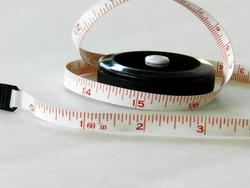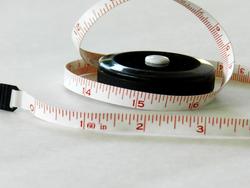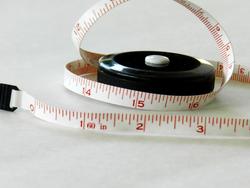


While probably considered a hassle, objective writing is one of the most important parts of your job. Without a plan and certain measurable checkpoints, you might get lost on the way to your goals. Try these five steps to creating your objectives and make sure you get where you intended.
1. Decide on the Type of Change
Before you begin to write an objective, it’s important to identify what type of change you want your training to make. In other words, what do you want your participants to do differently when they return to work? There are three different learning domains that you can focus on a different type of change. Deciding what domain of learning you want to focus on will make it easier to construct your objectives. The three domains are:
Attitude (Known as the affective domain—Changes how a learner chooses to act. Compliance training is a good example of when you will have to teach to this domain. It’s usually the hardest to craft objectives for this domain.
Skills (Known as the psychomotor domain)—This domain focuses on changing or improving the tasks a learner can perform.
Knowledge (Known as the Cognitive Domain)—This domain focuses on increasing what participants know. Leadership training would be a good example of this domain.
2. Get Some Action Verbs
Now that you’ve identified what domain you intend to focus on for your objective, it’s time to start crafting your very own objective. To do that, it’ll help to have a group of action verbs. To get you started, we’ve made you a list of action verbs that are separated by domain.
| Attitude | |||||||
| Advocate | Analyze | Choose | Convince | Endorse | Select | ||
| Accept | Approve | Collaborate | Cooperate | Evaluate | Support | ||
| Agree | Assess | Comply | Decide To | Pick | Tolerate | ||
| Allow | Believe | Conform | Defend | Recommend | Volunteer | ||
| Knowledge | |||||||
| Compare | Discover | Itemize | Recite | Retell | Tell | ||
| Define | Distinguish | Label | Recognize | Specify | Term | ||
| Describe | Explain | List | Recount | Spell Out | Write | ||
| Designate | Identify | Name | Relate | State | |||
| Skills | |||||||
| Actuate | Assemble | Demonstrate | Form | Perform | Remove | ||
| Adjust | Build | Design | Handle | Prepare | Repair | ||
| Administer | Calibrate | Develop | Manipulate | Process | Replace | ||
| Align | Change | Draft | Measure | Record | Set | ||
| Alter | Copy | Execute | Mend | Regulate | Service | ||
| Attitude | |||||
| Advocate | Analyze | Choose | Convince | Endorse | Select |
| Accept | Approve | Collaborate | Cooperate | Evaluate | Support |
| Agree | Assess | Comply | Decide To | Pick | Tolerate |
| Allow | Believe | Conform | Defend | Recommend | Volunteer |
| Knowledge | |||||
| Compare | Discover | Itemize | Recite | Retell | Tell |
| Define | Distinguish | Label | Recognize | Specify | Term |
| Describe | Explain | List | Recount | Spell Out | Write |
| Designate | Identify | Name | Relate | State | |
| Skills | |||||
| Actuate | Assemble | Demonstrate | Form | Perform | Remove |
| Adjust | Build | Design | Handle | Prepare | Repair |
| Administer | Calibrate | Develop | Manipulate | Process | Replace |
| Align | Change | Draft | Measure | Record | Set |
| Alter | Copy | Execute | Mend | Regulate | Service |
3. Create Your Very Own Objective
Give it a try!
4.Check Your Objective
To ensure our objectives are iron clad, The Bob Pike Group makes sure that each one includes four pieces: audience, behavior, condition and degree of mastery. For every objective, we identify and label each component, carefully scrutinizing its effectiveness. Here are the four pieces that every objective should contain.
1.Audience. It’s important that your objective identifies the people that will be doing the learning. Typically this will involve the word, “learner” or “participant.”
2.Behavior. You’ll need to identify what the participants are going to do differently. This component will contain your action verb.
3.Condition. This part of the objective will describe the situation of the participants.
4.Degree of Mastery. This part of the objective is closely tied to the change in behavior, as it stipulates the degree of the change.
To ensure your objectives are strong, we recommend you follow the same process. Try labeling each of the four components in your objectives to make sure you have included everything. Let’s take a look at a few examples to show you how the process works. In each of the following examples, the audience will be italicized, the behavior will be underlined, the condition will be highlighted, and the degree of mastery will be bolded.
Example 1
Given an expense report, the learner will complete the company form with no errors.
Example 2
After completing the three-day design training, the learner will be able to list the 8 steps in the design process in order.
5. Repeat…Repeat…Repeat
Go through this process for each objective. Don’t stop until you feel that you have enough objectives to effectively measure your performance. Remember, objectives work as checkpoints that lead to a completion of a goal. It’s important you have enough of them to keep yourself from getting lost.
If you ever need any additional help creating objectives or designing your courses, try our free resources, or check out some of our public workshops, particularly our Instructional Design Workshop.
By Jordan Meyers. Adapted from Becky Pluth's concurrent session on writing objectives at the 2014 Creative Training Techniques conference.
Don't miss out on updates and chances
to sharpen your skills with participant-centered learning.




3740 N Chestnut St #113 - Chaska, MN 55318-3053